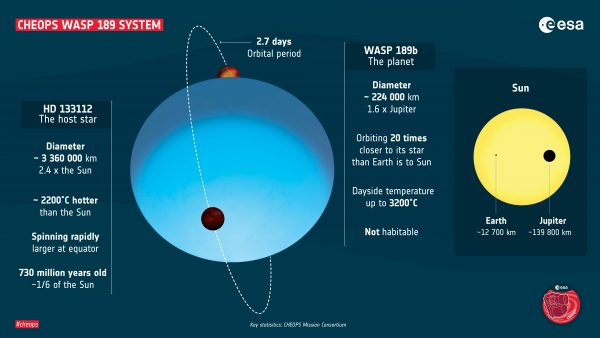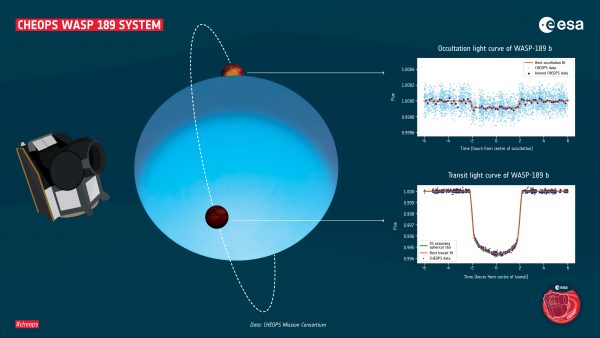TITANIA – Time variability as a new window on exoplanet climates
Project B.6 is led by Monika Lendl. It will perform an in-depth study of the nature of highly irradiated exoplanets. These planets are shaped by their proximity to their stellar hosts, which expose them to intense irradiation and powerful tidal forces that bind the objects into synchronous rotation. As a result, these planets’ permanent daysides are commonly heated to temperatures exceeding 1000K, and the resulting energy differential between hot day sides and cool night sides is the driving force of hot Jupiter climates. The TITANIA project will focus on studying the atmospheric dynamics on these planets, and how their extended gas envelops react to energetic stellar phenomena. To do so, we will combine a variety of observational indicators: the planetary limb is probed though transmission spectra obtained during transit, the planetary day side through occultations, and longitudinal information is obtained through phase curves.
TITANIA makes use of a set of observational programs: transmission spectra are probed from the 113-hour CHEWIE (Clouds, Hazes and Elements vieWed on gIant Exoplanets) survey at the VLT, and supplementary information will be added through high-resolution observations carried out in collaboration. Occultations and phase curves are being obtained through the CHEOPS GTO program. Stellar activity will be monitored using ground-based facilities.
These data contain a series of observational indicators that allow access to different parts of the planet, ranging from its day to its night side, and also probing at different altitude levels. They will allow us to map out a range of properties, such as the planetary composition, its aerosol content, the planetary wind speeds, and paint an increasingly complete picture of the atmospheric dynamics of hot Jupiters. Finally, the extent of the available data, together with accompanying observations of the host stars, allow us to probe for changes in the dominant planetary wind structures possible links to stellar activity.



